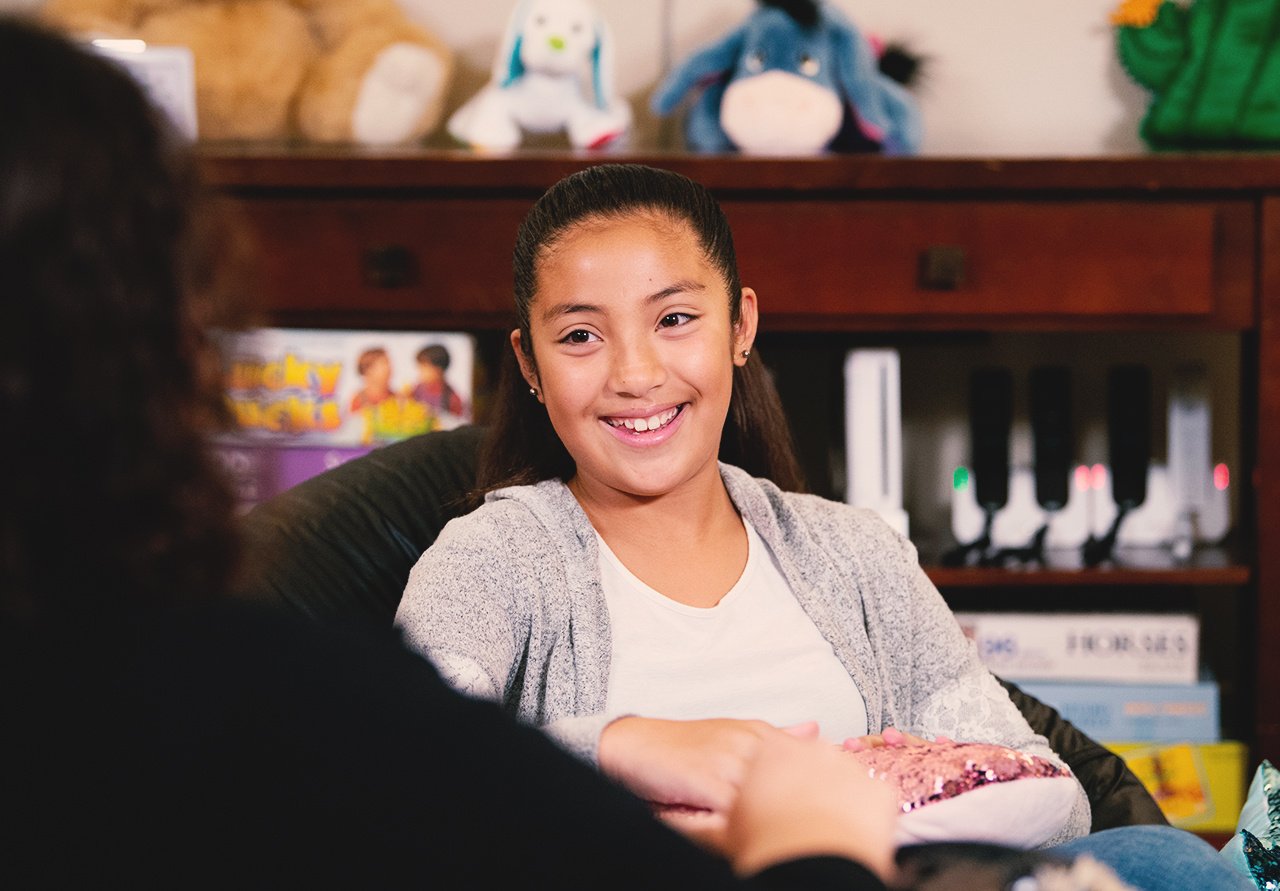
Managing the content your children view, and any subsequent exposure to media violence, is a daunting task. Are you ready for some absurd numbers? From birth to death, a human will watch TV for 7.5 years and spend over 5 years on social media. Evan Asano helps put that into context. If you used those 5+ years away from social media, you could:
Fly to the moon and back 32 times!
Climb Mt. Everest 32 times!
What’s the problem?
Not all media is bad. It holds the potential to teach a wide audience a great deal of information and present views previously misunderstood by viewers. But the wrong content at the wrong time can dramatically change who we are. And kids view a lot of content. Compounding on that, teens are highly susceptible to media’s influence. WebMD found that teens who view sexual content are vastly more likely to have sexual intercourse at a young age, and a Medical News Today study conclusively deduced that movies are a high influencer in teens choosing to drink alcohol.
By their 18th birthday an average person in the U.S. witnesses over 40,000 murders on TV. That’s just fatalities, not assault, aggression, or other violent behaviors. Overall, 60% of all television shows have violent scenes. It’s nearly unavoidable, and even children’s shows aren’t safe. 73% of shows designed for children under the age of 7 (TV-Y7) have at least one violent act. Certain episodes of SpongeBob SquarePants and The Fairly OddParents (seen on Nickelodeon) show more violence than many shows for mature audiences (TV-MA). It’s easy to think: kids know what they see on TV isn’t real, but unless a parent actively sits down and spells that out, a child could form their own version of what is real and what’s not.
More than one thousand scientific studies and reviews conclude that significant exposure to media violence increases the risk of aggressive behavior in certain children, desensitizes them to violence and makes them believe that the world is a ‘meaner and scarier’ place than it is.
– The Academy of Pediatrics
So who makes these ratings? Are they reliable? Maybe. The individual networks place ratings on their own shows and the TV Parental Guidelines board oversees them. But that’s just TV. What about movies, video games, and music? What about apps? It’s more than a little complicated, but we’re going to break it down for you.

Making sense of media ratings
Television content ratings
Kids watch a lot of tube. In over half of American households a TV is on nearly all of the time. Combining messages and meanings from sitcoms, sports, movies, cartoons, talk shows, and commercials: that’s a lot of influential information filtering through a child’s mind. The typical child gets plenty of information they probably should not.
54% parents of children aged two to six allowed them to see adult programs.
Violence occurs in 70% of episodes overall.
53% of all episodes contain sexual content or language.

We’re not suggesting you take a sledgehammer to your tube (though could be fun). Just take some precautions and familiarize yourself with the television content ratings guide. When a show starts, a little white set of letters and numbers pops up in the top left corner. It might say TV-MA or TV-G or something similar. That’s the rating. Perfect or not, it’s a great start to sorting through what you want your child to watch and avoiding media violence.
Movie ratings and the MPAA
What about the big screen? Violence is in 90% of movies, a 20% increase from what we thought was an already outrageous prevalence of violence on television programming. Most major films, or at least the ones we spend the most money going to see, are rated PG-13 or R and consequently, not suitable for children under that age of 13. PG-13 and R rated movies own 74% of all revenue since 1995 (cinema ticket sales, DVD rentals and sales, etc.). For every $100 consumers spent on movies, only $4 went to G-rated films. Does that even matter? What’s really the difference between G and PG?

Movie ratings are set by the MPAA (Motion Picture Associate of America) for partner members only. The studio members are 20th Century Fox, Paramount Pictures, Sony Pictures Entertainment, Universal Studios, Walt Disney Studios, and Warner Bros. Entertainment. So any movie made by a nonmember studio is not regulated by these ratings.
Video games
Do video games encourage violence? It’s certainly a hotly debated topic with over 90% of children in the US regularly playing video games, and 90% of the games they play containing violence and other mature content. Certainly some games are very beneficial. Puzzles and other logical problem-based games can increase memory, problem solving skills, and hand-eye coordination. But a classic shoot-em-up may do more harm than good. Recent studies found that excessive exposure to violent video games lowers attention span, emotion control, and increased likelihood of racist actions. So maybe the next time you’re shopping for a video game, check the little box in the bottom right corner.
Watching violent television, watching violent films, or playing violent video games increases the likelihood for aggressive behavior.
– Media Violence Commission of the International Society for Research on Aggression (ISRA)

All video games are rated by the ESRB (Entertainment Software Rating Board). While not an exact science, it’s easy to use and beneficial for weeding out inappropriate content. Moving onto a new and unregulated rating system for something most of us use hourly (and that’s on the low end)…
App age ratings
Seemingly after a child begins to crawl they are constantly in front of a screen. If it’s not TV then it’s a computer or smartphone. By the age of 8, 72% of children have used a smartphone or tablet. 10 years ago this wouldn’t really be a problem. Most internet browsers make it pretty painless to up parental controls, but who uses a browser on their phone? We have apps for nearly every single website or social media network. And while they are far more intuitive and pleasant to use, they require a bit more investigative research on the part of the parent.

From Tinder to Snapchat to Surgeon Simulator, the app store is filled with racy and violent content that can make a parent want to move the family 100 miles from the nearest cellular tower. But before you head off to Saskatchewan, it is possible to monitor the content on your child’s phone or tablet. Every app has a detailed list of potential mature content and an age rating. This list should always be the first thing you check before allowing your teen to sign up. Or you can fight apps with apps.
Music and the Parental Advisory Label
Unlike apps, music predates any other technology. We’re talking thousands of years, before writing, drawing, and automatic pancake makers at the Comfort Inn (pure magic). While music has certainly come a long way, any parental ratings or labels are still rudimental. The Parental Advisory Label is the best we’ve got, but it’s optional and only used by a few record labels, though they do make up the majority of music releases. Unfortunately, the absence of this label doesn’t guarantee explicit-free content. Roughly 33% of songs on pop and county radio contain drug or alcohol references, and the average teen listens to over 2.5 hours of music every day. That’s a ton of explicit or at least suggestive content.
Ease the influence media violence has on your child
So, you see your child sitting on the couch. The TV is on, phone in hand, earbuds inserted, and you think: “I’m in trouble.” You are going to be ok. If you read through these ratings you are in good shape. Most parents are either unaware of media ratings or uninterested; both are troublesome in combating exposure to media violence among our youngest generation. But even setting strict media guidelines for your children will not keep out everything. So before all else, talk to your children about important issues and beliefs you want them to understand without media’s influence.

No more information, I promise. You’ll thank me the next time a cartoon pops up on the TV with TV-Y7 (L, D, S). And I don’t want to freak you out here with all these doom-inducing stats. A little fight or chase will most likely be alright. We’ve all grown up with Tom and Jerry or Sylvester and Tweety fighting each other, and we’re fine. Right? Right?!










